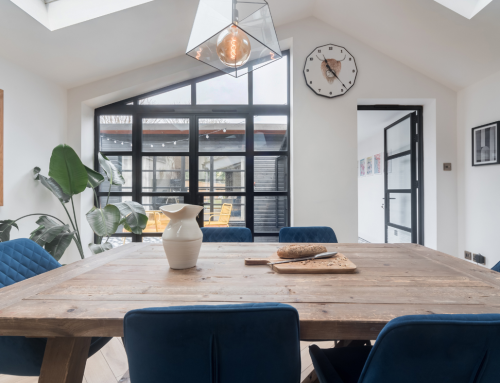It’s a big decision choosing the right architect or designer, most people think the role of the architect is to just draw plans for the council but there is much more they should be doing than just be able to draw up your ideas. The client is always right and we are very aware that it isn’t our home it’s yours and you know best on how you want to use the space but it is our responsibility to listen to what you want and use our experience to deliver it. It’s all well a good designing your dream space but if it is well over budget, doesn’t achieve planning or un-buildable it is pointless.
Research
When you are thinking about starting an extension the first step is to engage with someone that can bring your ideas to life, an architect or architectural designer can take your ideas and turn these into plans that can be used for the local authority to gain a planning consent and then for the builder to use to build your dream extension.
We would recommend searching online in your local area for businesses that offer this service, basic web searches will bring up a list of companies, the company you use doesn’t have to be local but it is important they have worked with your local authority as each one is slightly different to work with and have different preferences. A company that has worked in your area will likely have builders that cover your road which is always helpful.
Another way to look is to go onto your local councils’ website and search in the planning section, you can put your postcode in and see what applications have been submitted and who has produced the drawings. If you know your neighbour that comes up you could ask them for their opinion on the business they engaged with.
Ask
Ask friends that have had extensions built who they used, a recommendation from a friend or someone you trust is a great place to start. You can get an understanding of how the company works and what they are like to work with which is half of the battle.
Once you have a list of potential companies the next step will be to meet with them, there are a lot of online companies that will offer a phone consultation but we feel it is better to meet people face to face and to view the house in person.
If you don’t see the house, you are relying on google street view which can be out of date or the information given to you by the clients who don’t always know what is important from a planning point of view. It is important that you feel you can work with the chosen architect or designer as you need to trust each other and able to communicate as you will both have questions. You need to explain what you require from your extension and they need to be able to express any concerns with the design from a build point of view and from a planning side of things. If you don’t feel the designer has fully listened to you or you don’t feel comfortable with them then I would suggest, try someone else.
Ask the designer what types of projects they have worked on, if they have only designed lofts, they may not be suited for a large single storey extension. If they have mainly worked on large new build projects, they may not have much experience with permitted development. Permitted development is strict and a simple understanding of the requirement can result in your application being refused and you losing 8 weeks while you re-submit an amended application.
Finally
Although it isn’t a necessity for your designer to have designed extensions along your road or have worked with your local authority it can make a difference. Although there is one set of rules each council adopt a slightly different approach to what is acceptable. Kingston Council for example will only approve a rear extension up to 3.5m in depth under a householder application whereas other councils will be more lenient if your neighbours both have larger extensions in place.
Experience is also important, ask the designer how many projects they have worked on, it is likely that a lot would have been learnt from previous designs and that experience and knowledge can be used on your project. This is important for the design of your extension but also from a planning point of view, there is nothing more frustrating than to fall in love with a design for it to not get planning approval.
Make sure any quotation is clear with regards to costs, you don’t want to agree a price and then find out there is hidden costs for making changes or for additional plans that are required for the builder.






